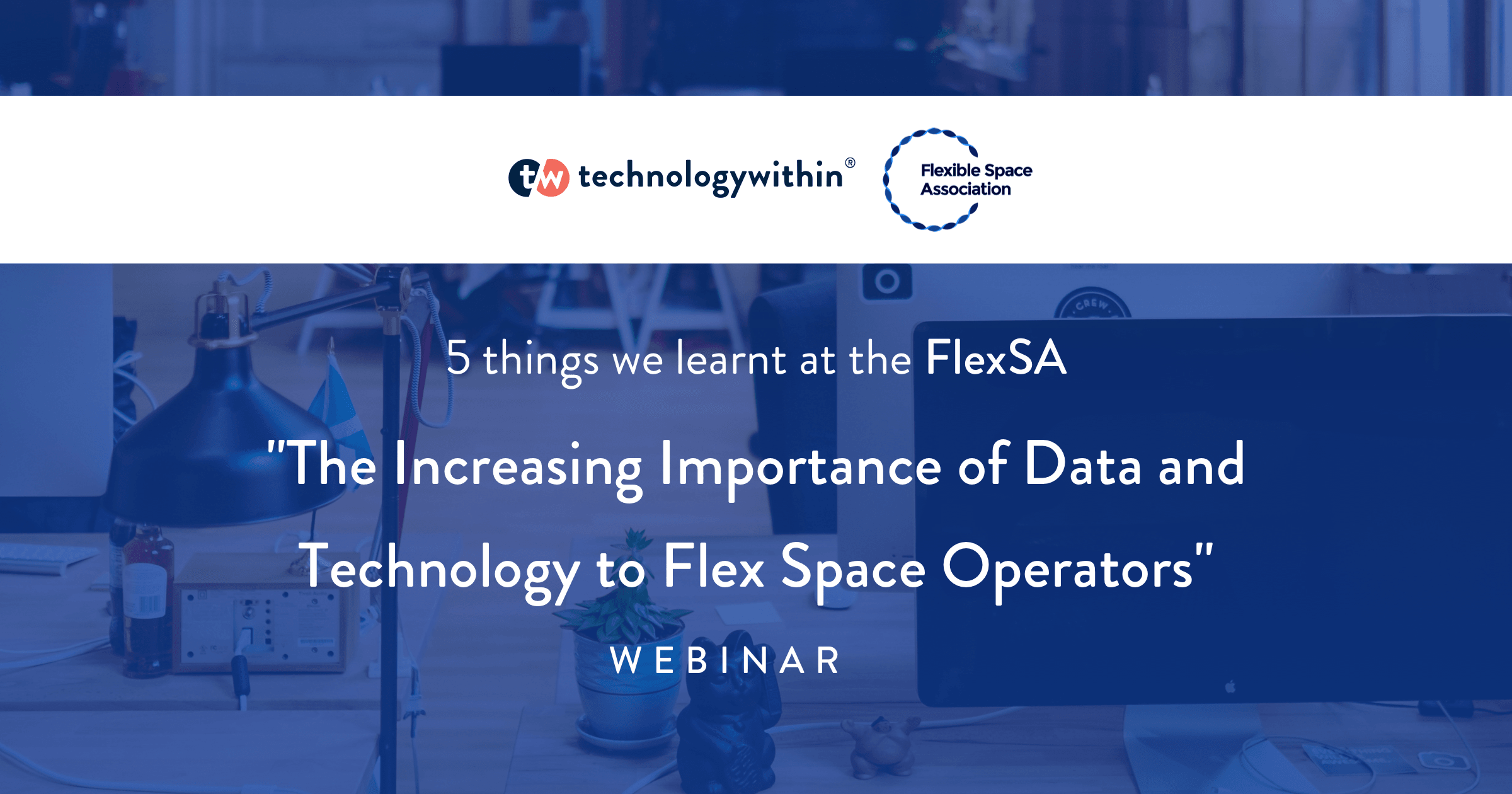
The team at FlexSA continued with their webinar series with the latest – “The Increasing Importance of Data and Technology to Flex Space Operators” featuring Peter Anderson from The Office Group, Miro Miroslavov from Officernd and Adam Blaskey from Produktiv. Here’s our five key takeaways from this FlexSA webinar:
Data will help with the return to the workspace
Now more than ever, operators need to know how their clients are spending their time within the workspace, what areas are busy, where is there a lot of footfall and where they could improve the physical experience. By gathering this data, operators can use it to help them ensure that their space is compliant with the social distancing regulations and that their clients are reassured that they can enjoy a safe return to work.
Health and hygiene of increased importance
Smart buildings and technology will help space operators to offer more healthy workspaces. Systems can detect the number of people within a space and adjust the air con or heating accordingly. Fresh air flow is going to be key with studies showing that excess CO2 can lead to decreased concentration within a workspace. Operators need to start marketing their space as a healthy place to work.
Can you predict the future?
The panel discussed how data and smart technology can be used to help operators predict whether certain clients will stay with them when their current contract ends. The ability to monitor the number of visitors the client has, their use of coworking spaces and their attendance at events can provide valuable insight into the health of the clients business and the likelihood that they will stay within your space. If they have few visitors, don’t interact much with the workspace community and are underutilising their space then it could mean that they are unlikely to stay. All this points to space providers becoming service providers and working to ensure that their clients receive a great experience and therefore are less likely to move on.
Do clients know what they need?
Peter gave us some great insight into how The Office Group were using the data they had gathered to really design the space for their user’s requirements. He discussed that often new users of flexspace don’t really know what they need. For instance, if they had 10 people, they would request a space for 10 but in reality, not everyone is going to be in the office at the one time. So, they were able to show the client that their space wasn’t really being fully utilised, and they didn’t necessarily need that size of office. Instead they were able to offer them a 6-person space and some coworking passes, which worked out cheaper for the client. It was a win-win situation for both sides, the client makes a cost saving and the space operator is able to fully utilise the space and offer it to new clients. He predicted that post COVID-19, people will start to realise that they don’t need to have all their people in the space at the one time.
Combining the digital with the physical
Adam highlighted the importance of operators combining the digital and physical experiences to provide an immersive experience for their clients. This ‘Phigital’ approach, combining the data you gather in your space, alongside the physical interactions and community you build means that those providers will have an advantage and be more likely to ride out tough times as their offering really is developed around the needs of their space users.
As always, thanks to the panellists and the team at FlexSA for organising this event. If you would like to discuss how IT and data can help you to better utilise your workspace, get in touch with our team for a chat.
Recent articles

technologywithin announce Florian Kappes as Director, Europe

Harnessing data to optimise flexible workspace management
